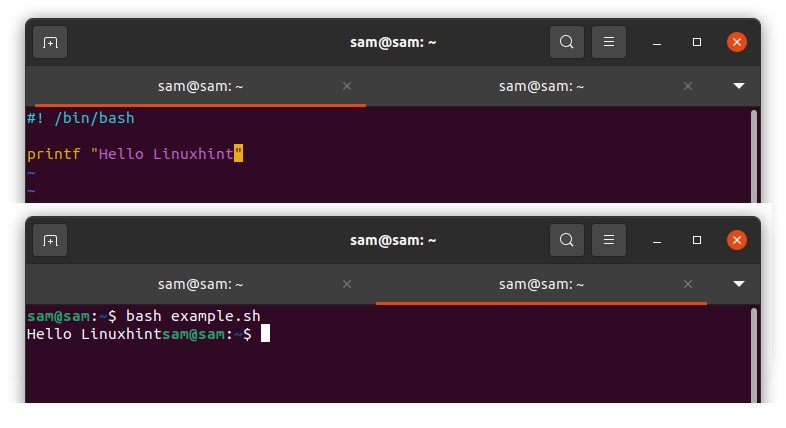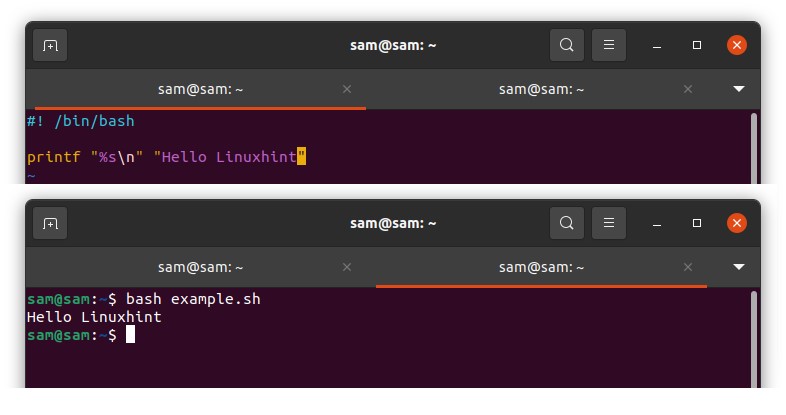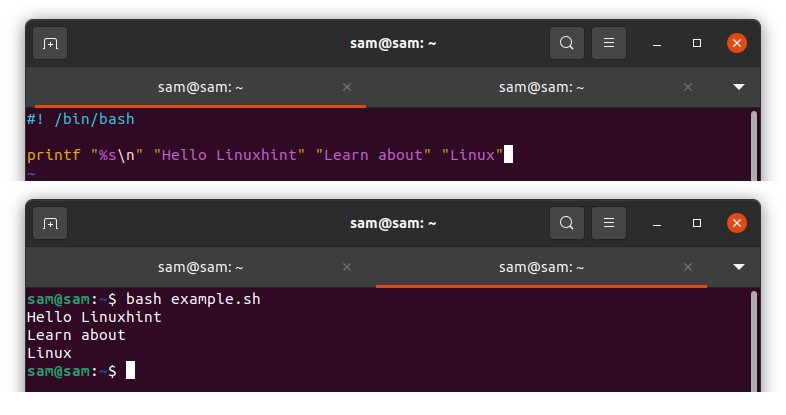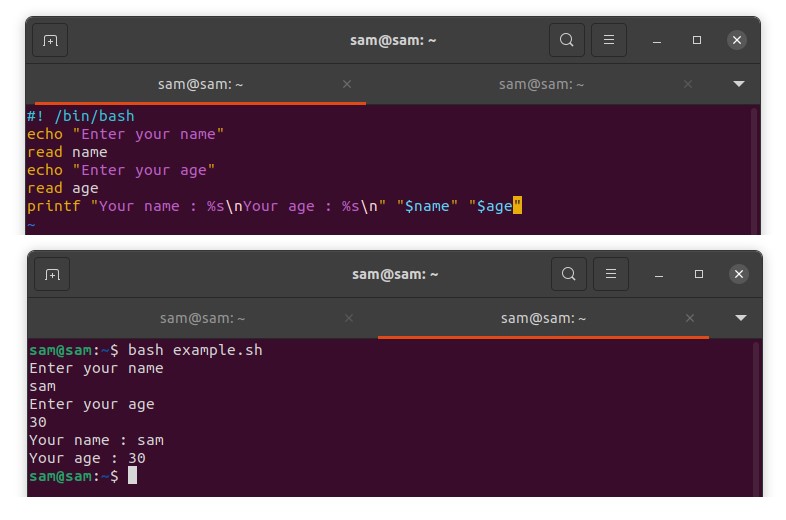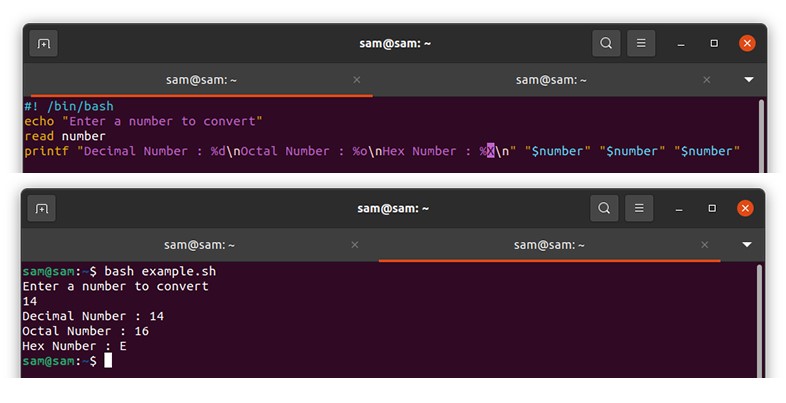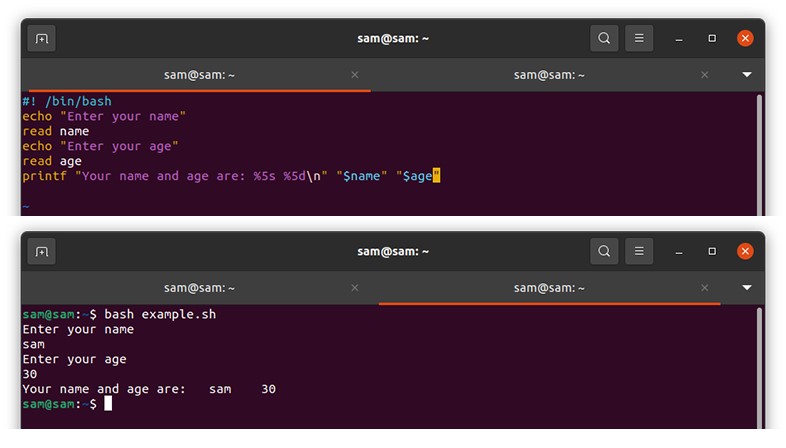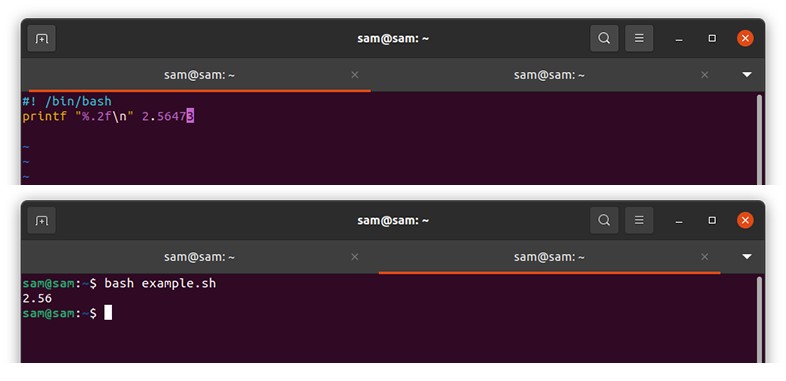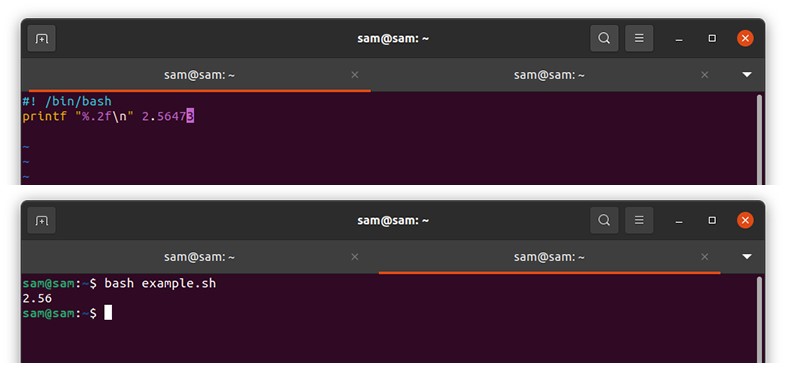The “printf” command in bash scripting works the same way “printf ()” works in the C language. This post will focus on the “printf” command, its syntax, and examples that further elaborate the use of this command. Let’s check the syntax of the “printf” command:
<var> : It is optional to assign output to a variable.
<formate> : It is a string that may contain different format specifiers such as “%s”, “%b”, “%d”, “%f”, and backslash escape
<arguments…> : The arguments can be any value or variable
How to use printf command in bash scripting using Vim editor:
We are using Vim editor for this guide because of its rich functionality and ease of use. Get Vim on your device using:
Launch vim editor:
Let’s write a simple program to print a string using “printf”:
printf “Hello Linuxhint”
To save the file, press the “Esc” button to switch the mode and then type “:w example.sh” and then “Enter”. Now open a new terminal window and type:
The above command will execute the script the print out “hello linuxhint” text as shown below:
Now, let’s include some format specifiers:
printf “%s\n” “Hello Linuxhint”
In the above example, “%s” tells that the corresponding argument should be treated as string and “\n” for the new line. Similarly, if we use “%d,” then the argument will be treated as an integer:
printf “%s\n” “Hello Linuxhint” “Learn about” “Linux”
All three arguments will be treated as a string and printed in a new line as demonstrated in the following output:
Another example is mentioned below further to understand the use of the “printf” command:
echo “Enter your name”
read name
echo “Enter your age”
read age
printf “Your name : %s\nYour age : %s\n” “$name” “$age”
“Your name : %s\n Your age : %s\n ” is format while “$name” “$age” are the arguments. Whereas “%s” pointing the arguments.
How to use conversion specifiers with printf command:
The conversion specifiers are characters used with the “%” sign to indicate how to treat the arguments. Let’s check the list of some commonly used specifiers:
| Specifier | Description |
|---|---|
| %% | Prints “%” symbol |
| %c | Takes arguments as a single character |
| %e and %E | Take argument in floating-point number and prints in exponential notation, %e for lower case letter and %E for capital letter |
| %g and %G | Take argument in floating-point number and prints in normal or exponential notation |
| %f | Takes argument as floating numbers |
| %d | Takes arguments as signed integers |
| %u | Takes argument as unsigned integers |
| %o | Takes argument as an unsigned octal number |
| %x and %X | Takes arguments as unsigned hexadecimal integers |
Let’s further elaborate the above specifiers with an example in bash:
echo “Enter a number to convert”
read number
printf “Decimal : %d\nOctal : %o\nHex : %X\n” “$number” “$number” “$number”
How to use Flag, Width, and Precision directives with printf command:
Flag directives come with optional use with the “printf” command. The commonly used flag directives are
- “-” Left justify the output
- “+” Adds “+” sign with integer
- “0” Adds “0” with a number instead of spaces
Width directives add space with the output usually used after the flag. Let’s understand it with an example:
echo “Enter your name”
read name
echo “Enter your age”
read age
printf “You name and age are: %5s %5d\n” “$name” “age”
“%30s” means space is 30 characters long, and to align the output form left, use the “-” sign “%-30s”.
The precision directive consists of the dot “.” Following by positive integer:
printf “%.2f” 2.56473
The output would be:
If the number is an integer, the precision directive will add “0” before the number. If the number is floating-point type, then the precision directive will specify the number of positive digits after the decimal point. For string, it specifies the number of characters to be displayed:
printf “%.2f\n” 2.468936
printf “%.3d\n” 10
printf “%.3s\n” “samlinux”
Backslash Escaped parameters:
Backslash escape parameters, also called escape sequences, are used with a backslash to format the string with the “printf” command. These sequences do not represent themselves but interpret in some other characters. Some commonly used escape sequences are:
| Character | Description |
|---|---|
| \\ | Prints backslash character |
| \b | Prints backspace character |
| \n | Prints output in a new line |
| \r | Prints a carriage return (cursor at the beginning of the line) |
| \t | Gives tab space from right |
| \v | Gives tab space |
Conclusion:
When it comes to print something in bash scripting, the “echo” command is most commonly used because it is easy to use and remember. But “echo” command has its limitation. Therefore, to properly format the output, the “printf” command can be used. The “printf” command comes with plenty of options to format string output and even basic numbers’ conversions and formatting. This guide thoroughly comprehends the “printf” command’s functionality in bash scripting with examples.

